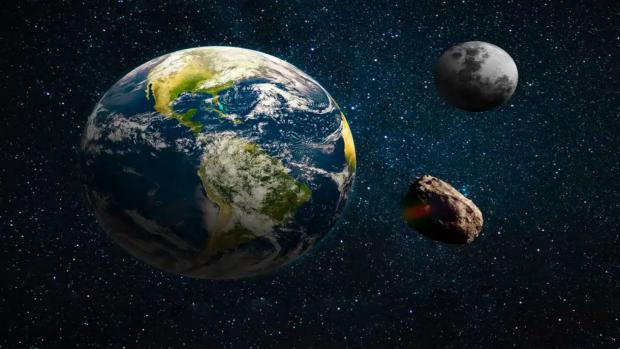
Breaking News
 Arizona's fully autonomous homes: off-grid, no hookups
Arizona's fully autonomous homes: off-grid, no hookups
 The 22 surprising ways Musk and Vivek's DOGE can save over one TRILLION dollars
The 22 surprising ways Musk and Vivek's DOGE can save over one TRILLION dollars
 Secrets of Earth's 'second moon' revealed
Secrets of Earth's 'second moon' revealed
 The Poster Child Of Europe's Electric Car Future Just Filed For Bankruptcy After Burning...
The Poster Child Of Europe's Electric Car Future Just Filed For Bankruptcy After Burning...
Top Tech News
 Forget Houston. This Space Balloon Will Launch You to the Edge of the Cosmos From a Floating...
Forget Houston. This Space Balloon Will Launch You to the Edge of the Cosmos From a Floating...
 SpaceX and NASA show off how Starship will help astronauts land on the moon (images)
SpaceX and NASA show off how Starship will help astronauts land on the moon (images)
 How aged cells in one organ can cause a cascade of organ failure
How aged cells in one organ can cause a cascade of organ failure
 World's most advanced hypergravity facility is now open for business
World's most advanced hypergravity facility is now open for business
 New Low-Carbon Concrete Outperforms Today's Highway Material While Cutting Costs in Minnesota
New Low-Carbon Concrete Outperforms Today's Highway Material While Cutting Costs in Minnesota
 Spinning fusion fuel for efficiency and Burn Tritium Ten Times More Efficiently
Spinning fusion fuel for efficiency and Burn Tritium Ten Times More Efficiently
 Rocket plane makes first civil supersonic flight since Concorde
Rocket plane makes first civil supersonic flight since Concorde
 Muscle-powered mechanism desalinates up to 8 liters of seawater per hour
Muscle-powered mechanism desalinates up to 8 liters of seawater per hour
 Student-built rocket breaks space altitude record as it hits hypersonic speeds
Student-built rocket breaks space altitude record as it hits hypersonic speeds
 Researchers discover revolutionary material that could shatter limits of traditional solar panels
Researchers discover revolutionary material that could shatter limits of traditional solar panels
Secrets of Earth's 'second moon' revealed

Asteroid 2024 PT5 was dubbed Earth's temporary 'second moon' because of its size and lingering presence so close to our planet.
Astronomers collected data on the asteroid as it circled Earth, finding it may be a chunk of our moon that was broken off in one of the collisions that left the lunar surface marred by craters.
The leading theory of lunar formation is the 'giant impact hypothesis,' which posits that the moon is actually an enormous, orbiting hunk of Earth.
According to this theory, our planet collided with a Mars-sized planet roughly four billion years ago, and this triggered an explosion of material from Earth that shot into space and eventually condensed to form the moon.
If the giant impact hypothesis and the analysis of Asteroid 2024 PT5's origin are correct, that would mean our true moon is the parent of this mini moon, and Earth is its grandparent.
The second moon will begin its journey away from Earth today as it gets pulled out into space by the sun's gravitational force.
'There are multiple lines of evidence suggesting that this asteroid may have a lunar origin,' Carlos de la Fuente Marcos, study lead author and a professor at the Universidad Complutense de Madrid, told Space.com.
'Current research favors its rapid rotation with a rotational period under one hour, to be expected if 2024 PT5 is either a large boulder from the surface of the moon or a fragment from a larger object.'
He and his brother, Raul de la Fuente Marcos the Universidad Complutense de Madrid, identified the asteroid's mini moon behavior.
As it traveled around the outer-edge of Earth's orbit, the astrophysicists used telescopes in Spain's Canary Islands to collect hundreds of observations of the asteroid.
They analyzed its spectra, or the range of electromagnetic wavelengths that it emits. This data indicated that the asteroid's chemical composition matches that of lunar material previously brought back to Earth.



